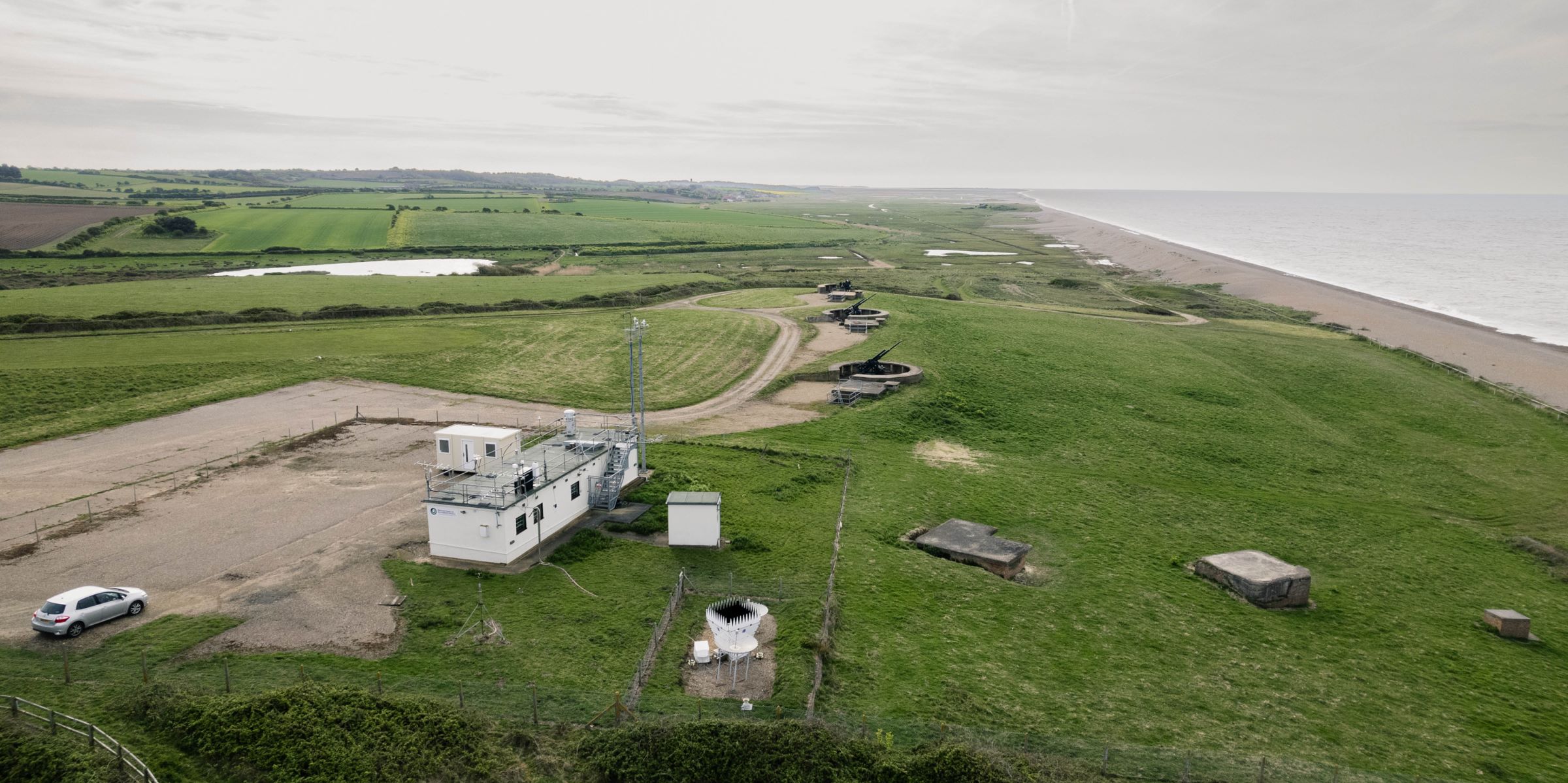
The ICOS Atmosphere station Weybourne is located in the idyllic town of Weybourne on the North Norfolk coast in the United Kingdom. This picturesque, cosy little town sits right next to a beautiful long coastline that offers plenty of opportunities for leisurely walks, wildlife and bird-watching.
The path to the Weybourne Atmospheric Observatory takes us through lush green fields. We – two Finns who thought they could handle the cold – are quickly humbled by the surprisingly cold May weather. Because of its location on a high point next to the open sea, the station is well situated to sample air masses from various directions: from the United Kingdom, central Europe and occasionally from the Arctic.

Data quality above all
As with all ICOS stations, ensuring high data quality is one of the biggest priorities. The station specifications from the ICOS Atmosphere Thematic Centre define everything from how the ICOS Atmosphere stations are run, to what instruments should be used and to what level of accuracy and precision are required. Every day at 1 am the raw data is sent to the ICOS Atmosphere Thematic Centre which takes care of the data processing.
“ICOS motivates us to maintain high levels of precision and accuracy of our measurements.”, says Grant Forster, the Principal Investigator of the station. “This is greatly aided through the ICOS data processing strategy that routinely provides data products to help us assess our performance on the network.”


The other part of quality assurance is always the people. Along with station PI Grant Forster, technician Nicholas Garrard frequently checks the data and the instruments to make sure everything is running as it should be.
“We routinely have regular data review meetings”, explains Nicholas. “If the data doesn’t look sensible, we investigate as soon as possible either remotely or by visiting the observatory to perform an instrument check.”

The staff at Weybourne are particularly proud of a certain instrument, the Spectronus Fourier Transform Infrared (FTIR) spectrometer, for which they worked alongside the ICOS Atmosphere Thematic Centre to get approved as an official ICOS instrument. The FTIR offers an alternative to the more commonly used instruments that measure greenhouse gases using lasers with a very narrow wavelength range.
“By utilizing a broadband laser that simultaneously provides infrared light covering a broad wavelength range, we can simultaneously measure the main four ICOS gases. With a bit of maths, we can then quantify how much of the infrared light is absorbed at specific wavelengths due to the presence of greenhouse gases”, Grant explains.
The spectrometer allows scientists to hone in on a specific greenhouse gas, which Grant explains to us using an analogy from classical music: “It’s a bit like listening to an orchestra and isolating the sound from a specific instrument .”


Weybourne data used to assess success towards net zero
Greenhouse gas data from Weybourne will be used in the United Kingdom as part of the GEMMA project, which aims to use new and existing in situ atmospheric observations to provide verification of monthly emission estimates compiled using ‘bottom-up’ accounting. This will be key in helping the UK monitor its progress towards net zero.
“We will have an operational network providing monthly emissions updates available to stakeholders through an online dashboard”, Grant explains. “ICOS plays an important role in the delivery of this high-quality data and provides an important link between observational networks.”
This project will build upon the UK’s Deriving Emissions related to Climate Change (DECC) network, which verifies UK emissions on an annual basis and reports to the United Nations Framework Convention on Climate Change; this includes two UK ICOS stations: Weybourne and Ridge Hill.

Quality data depends on committed teams
Life at the Weybourne station on a regular day in early May might look calm and serene, but under the surface, there’s a lot going on. Behind all ICOS data, there’s a dedicated team of scientists, engineers and technicians at the stations, and a long line of other professionals handling the data processing and quality assurance processes at the ICOS Thematic Centres.

“There is a bit of a tendency these days to see greenhouse gas measurements as very automated, easy and effortless, but I think we should be reframing that narrative. Measurements are still difficult and highly skilled,” says Research Fellow Penelope Pickers who used Weybourne data in her research on the impacts of COVID-19 lockdowns on greenhouse gas emissions. “Greenhouse gas measurements are fundamental for environmental science. It’s important that we keep investing in these key measurements. “
The Weybourne Atmospheric Observatory is operated by the University of East Anglia and supported by National Centre for Atmospheric Sciences (NCAS).
Pictures: Pekka Pelkonen